Introduction
Genesis Technologies is a legendary speaker company, having had such
luminaries as Mark Schifter associated with it. Currently, the renowned Arnie Nudell takes the bows as designer. We
interviewed him recently, and he told us about the process of speaker
design. Bottom line: It ain't easy!
The 6.1 line includes floor-standers, the center,
wall-mounted surrounds, and a subwoofer. The complete set is shown below.
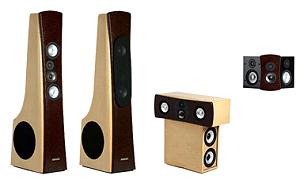
Genesis speakers are not your
entry-level products. Far from it, just the center speaker alone is $3,250.
So, for the entire system, you are talking a major investment. Are they
worth it? You bet.
They come in several finishes including
the Olive Burl and Maple for the review unit.
The Design
The 6.1c is configured for center
channel use, but you can get several of them and set them up in an LCR
configuration if you like. Genesis sent two 6.1cs so I could run them as a
stereo pair.
This speaker is a three-way design,
with a sealed enclosure. On the front are the 1" ribbon tweeter and 5"
midrange, mounted on a polymer plate. To the right and left are the 6"
woofers. Crossover between the woofers and midrange is at 450 Hz, while the
crossover between the midrange and tweeters is at 4 kHz.
The rear panel is just as interesting.
It has a second 1" ribbon tweeter that can either be turned on or off with
the toggle in the center of the control panel. This second tweeter adds
presence to the sound, but of course, you need to have the speaker out from
the wall somewhat to get the effect. Otherwise, you just turn it off. There
are two sets of binding posts, one for input from the amplifier, and a
second for feeding through to other speakers or the subwoofer.
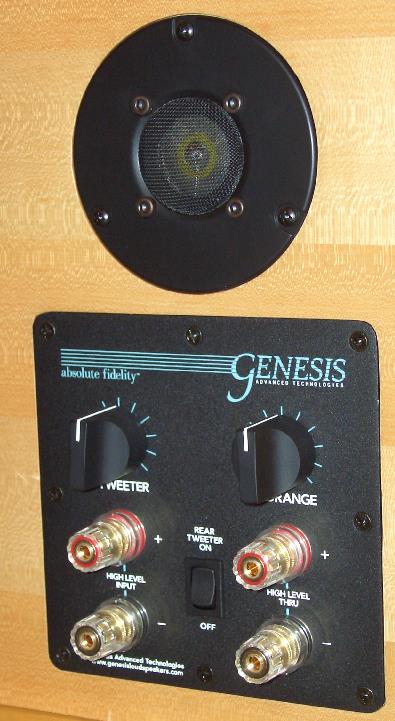
Notice also that there are volume
controls for the front tweeter and midrange driver. The tweeter control
gives ± 1
dB, while the midrange control gives ±
0.75 dB. This sounds like heresy for high-end, but in fact, they worked
beautifully. If you don't like too much treble, you can turn it down.
Turning up the midrange brings vocals forward, and the center channel is
where all the vocals are. I thought it might add bloat to the sound, but it
didn't. A very nice touch.
At 69 pounds and being almost 3 feet
wide, you probably won't be putting this thing on top of your TV. There are
several very good center speaker stands on the market which will work much
better.
Listening
I tested the Genesis 6.1c with a Classé SACD-2 Player,
Yamaha Universal Player, Lexicon MC-12 SSP, Balanced Audio Technology VK-5i
preamplifier, Balanced Audio Technology VK-500 Power Amplifier, McIntosh
MC-602 Power Amplifier, McIntosh MC-1200 Power Amplifier, Carver Platinum
Ribbon Speakers, and Thiel CS2.4 Speakers. Cables were Nordost and
BetterCables. I used the 6.1c both as a center channel speaker and as a
stereo pair (front left/right).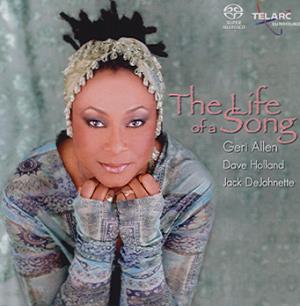
Man, these babies can rock! For
example, with the new Telarc SACD (SACD-63598), piano (Geri Allen) and drums
(Jack DeJohnette) jumped into my room (Dave Holland on bass). Kick drum was
tight and natural. Piano was right there. Although the disc is
multi-channel, I played it in two-channel mode.
The sound stage was wide, yet with no
hole in the middle (I set them up vertically for the stereo pair tests, and
horizontally - one speaker - for the center channel tests).
If you like jazz piano, try Brain
by Hiromi (Telarc SACD-63600). It has some of the most amazing combinations
of natural piano and electronic drums I have ever heard, and the Genesis
displayed it in great form. It is a tough disc, because the electronic drums
generate very articulate high frequencies.
Stravinsky's The Firebird is no slouch
either, especially the new Telarc SACD (SACD-60039). It starts out with low
level bass
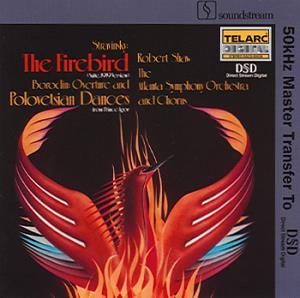 and
builds to a climax that will challenge any speaker system. The Genesis was
up to the challenge, at least as far as the goose bumps on the back of my
neck were concerned.
and
builds to a climax that will challenge any speaker system. The Genesis was
up to the challenge, at least as far as the goose bumps on the back of my
neck were concerned.
All speakers benefit from a good
subwoofer, and the Genesis 6.1c is no exception. Genesis has a sub that is
designed for the 6.1 system, but I did not have it on hand to use.
Nevertheless, I did not get the feeling that bass was lacking with the 6.1c.
Rachmaninov Vespers (PentaTone
PTC-5186-027) is a good disc to test the vocal clarity of speakers, with
full chorus. Voices sounded very natural on the 6.1c.
Movies, movies, movies. I trotted out
my collection of films that test anything from player, to SSP, to power
amplifiers, and speakers. One of my favorites is Pearl Harbor,
because during the attack scene, people are yelling orders with machine gun
fire and explosions occurring all around. The 6.1c delivered those orders
with great clarity, including those with a few choice four letter words.
On the Bench
The speaker was placed horizontally on
a stand about 24" high, and measurements were made with a
calibrated microphone placed 8" from the respective driver.
At 50 Hz, which is just about at the
lower limit of the 6.1c, THD+N was a respectable 4% (measured from the left
woofer).
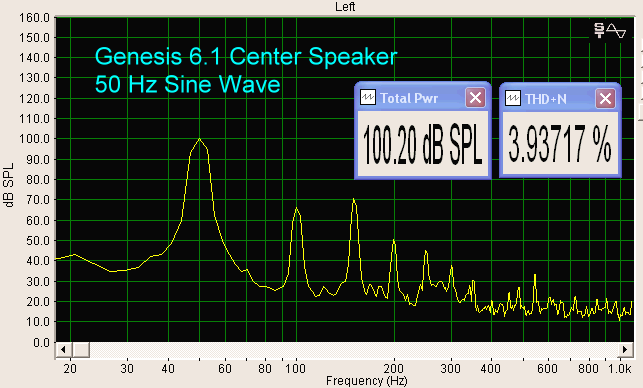
Moving on to the midrange driver, and
using a 1 kHz sine wave, THD+N was less than 1% at 100 dB.
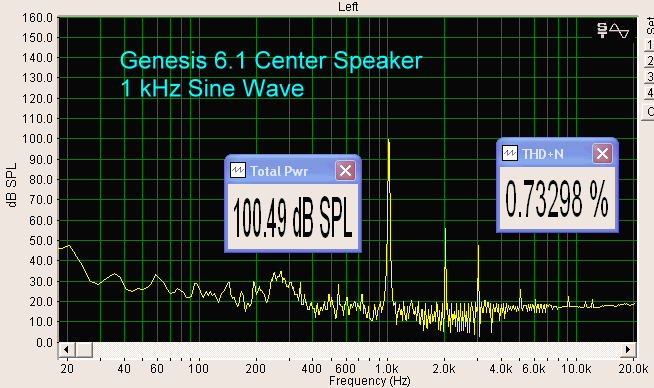
IMD from the midrange driver, using 1
kHz and 1.5 kHz sine waves, was a low 0.025%.
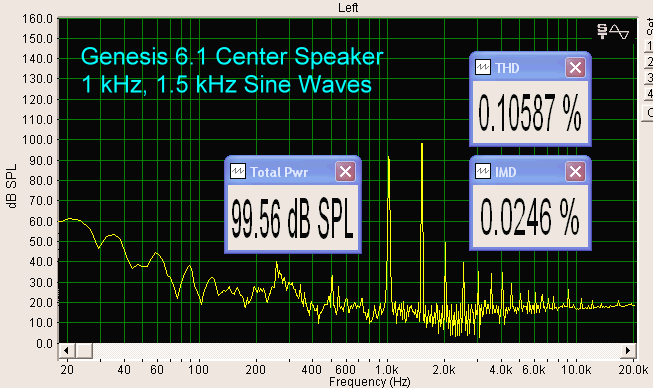
The front tweeter (rear tweeter was
left on for the tests) produced only 0.02% IMD, using 5 kHz and 6 kHz sine
waves.
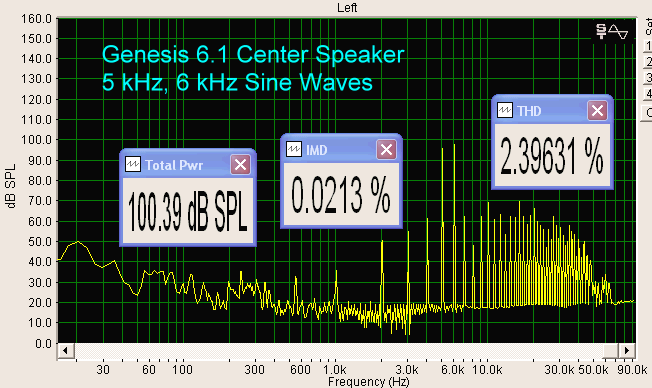
At 10 kHz, the tweeter produced 1.34%
THD+N.
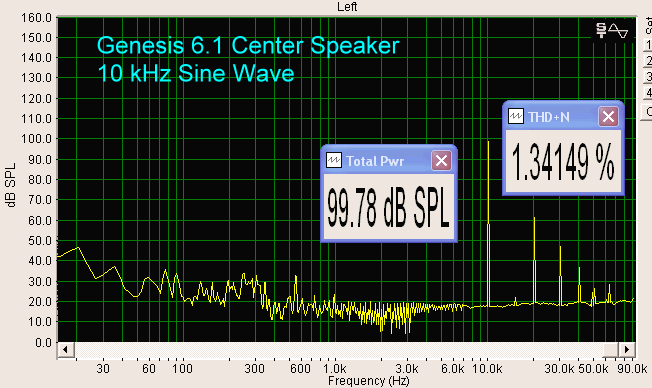
IMD from the front tweeter, using 10
kHz and 11 kHz sine waves, was still only 0.025%.
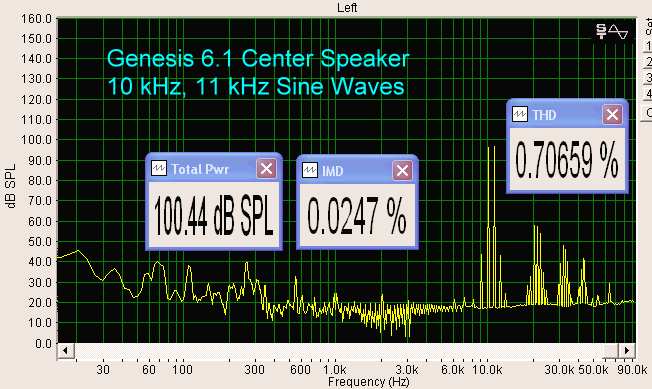
Below is shown the quasi-anechoic
response of the Genesis 6.1c, with the microphone 1 meter from the center of
the speaker, on axis. The response is generally flat from 50 Hz to 20 kHz.
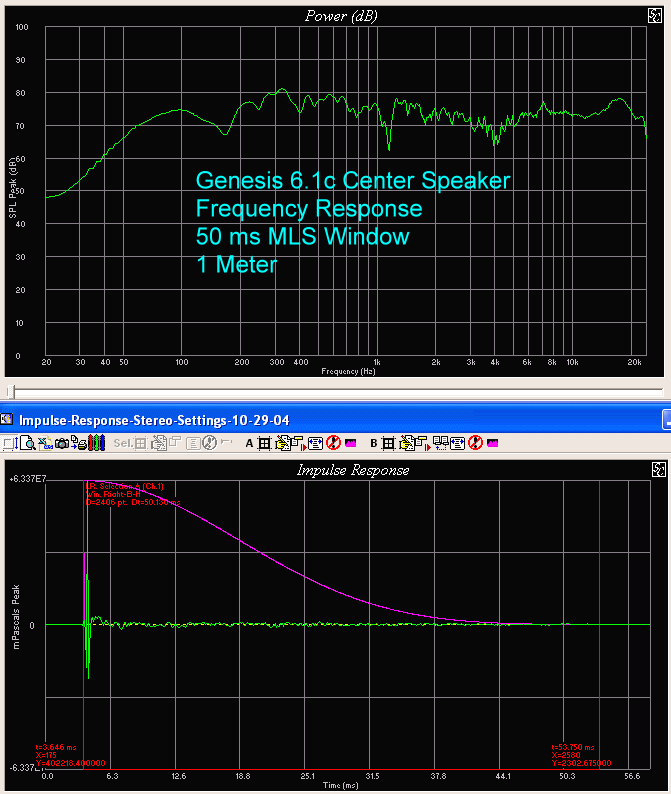
The Impedance of the Genesis 6.1c stays
mostly between 2 Ohms and 5 Ohms throughout the audible range above 50 Hz.
Electrical Phase stays ±
300, which is excellent.
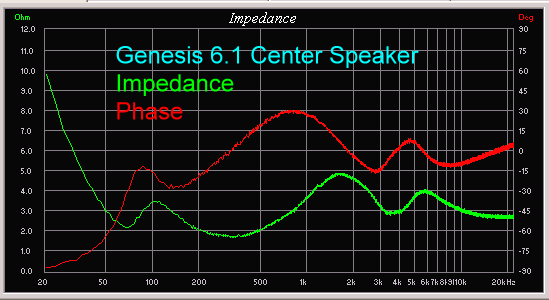
Conclusions
If the entire Genesis 6.1 speaker set is as
good as the 6.1c, this is going to be one of the systems to beat. It has a
beautiful sound to go with its looks. The center channel is a critical part
of any surround sound package, and the 6.1c is full to the challenge.
- John E. Johnson, Jr. -